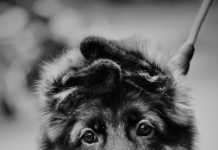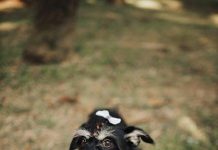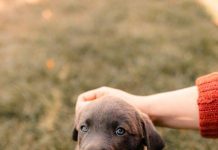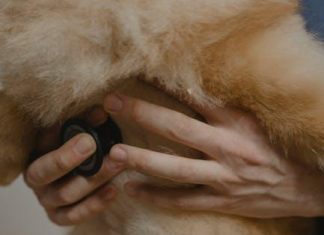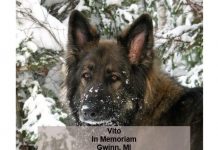Introducing a puppy to the world is an exciting journey filled with new sights, sounds, and experiences. However, as delightful as it is, taking your furry friend into public spaces can sometimes be overwhelming for both of you. Ensuring your puppy remains calm in these environments is essential for their safety and your peace of mind. Whether it’s a bustling park, a busy street, or a pet-friendly café, teaching your puppy to be composed in public is a skill that can be nurtured with patience and consistency. In this article, we will explore practical tips and strategies to help your puppy develop the confidence and tranquility needed to enjoy public outings. With a warm and gentle approach, you can guide your pup toward becoming a well-mannered companion, ready to explore the world by your side.
Understanding Your Puppys Needs and Triggers
Understanding what makes your puppy tick is crucial for successful training in public spaces. Puppies are naturally curious and may become overstimulated by new environments. Observing your puppy’s behavior in different settings can help you identify what they find exciting or overwhelming. Pay attention to their body language—are their ears perked up, or do they cower? Do they pull on the leash to explore, or freeze in place? Recognizing these signs will allow you to tailor your training approach to meet their needs.
It’s also essential to recognize triggers that might cause anxiety or excitement. These could include:
- Loud noises: such as traffic or construction sounds.
- New people: strangers can be both intriguing and intimidating.
- Other animals: especially if your puppy hasn’t been well-socialized yet.
- Unfamiliar objects: like bikes or strollers.
By pinpointing these triggers, you can gradually expose your puppy to them in a controlled manner, helping them to remain calm and composed. Use positive reinforcement to reward calm behavior, creating a positive association with these experiences.

Creating a Safe and Positive Environment
To nurture a serene and welcoming atmosphere for your puppy in bustling public areas, it’s crucial to establish a foundation of positive reinforcement and gentle guidance. Begin by familiarizing your puppy with a variety of environments at a pace that suits them, gradually introducing new stimuli. This slow and steady approach helps prevent overwhelming your furry friend and encourages confidence.
- Consistency is Key: Maintain a routine that your puppy can rely on, such as regular walks and playtime, which helps them feel secure and balanced.
- Positive Reinforcement: Reward calm behavior with treats or praise, reinforcing the idea that tranquility brings rewards.
- Safe Spaces: Ensure your puppy has a designated safe spot in public areas, like a familiar blanket or a comfortable carrier, to retreat to if they feel stressed.
- Socialization: Introduce your puppy to different people, pets, and environments gradually, ensuring each interaction is positive and enjoyable.
By incorporating these practices, you create a nurturing environment where your puppy can thrive, ultimately leading to a more relaxed and content companion in any setting.

Implementing Consistent Training Techniques
To ensure your puppy remains calm and collected in public spaces, it’s essential to adopt a set of consistent training techniques. Establishing a routine not only helps your puppy understand expectations but also builds a sense of security. Begin with short and frequent training sessions in a controlled environment, gradually introducing more distractions as your puppy progresses. Consistency is key, so use the same commands and gestures each time you train. This repetition helps reinforce the desired behavior and makes it easier for your puppy to learn.
- Start with the Basics: Reinforce basic commands such as “sit,” “stay,” and “come” at home before transitioning to public spaces.
- Gradual Exposure: Introduce your puppy to new environments slowly, ensuring they’re comfortable before moving to busier areas.
- Positive Reinforcement: Reward calm behavior with treats and praise to encourage repetition of these actions.
Remember, patience is crucial. Puppies learn at their own pace, and every small victory is a step towards a well-behaved companion. By sticking to a consistent training routine, you’re setting the stage for positive experiences in public spaces, making outings enjoyable for both you and your puppy.

Encouraging Calm Behavior with Reward-Based Strategies
Embracing a reward-based approach can transform your puppy’s behavior in bustling environments. Positive reinforcement is key. When your puppy exhibits calm behavior, immediately reward them with a treat or verbal praise. This positive association encourages them to repeat the behavior. Consistency is crucial; always have a small stash of treats ready to reinforce these moments of tranquility.
- Identify Calm Moments: Pay attention to those fleeting seconds when your puppy is relaxed and reward them promptly.
- Use High-Value Rewards: Opt for treats your puppy loves, ensuring they are motivated to stay calm.
- Incorporate Praise: Pair treats with enthusiastic verbal praise to reinforce the positive behavior.
- Gradual Exposure: Slowly introduce your puppy to more stimulating environments, rewarding calmness as they adapt.
Remember, patience is your best friend. Puppies are naturally curious and excitable, so celebrating small victories with a gentle approach will build their confidence and ability to remain composed in public spaces.



